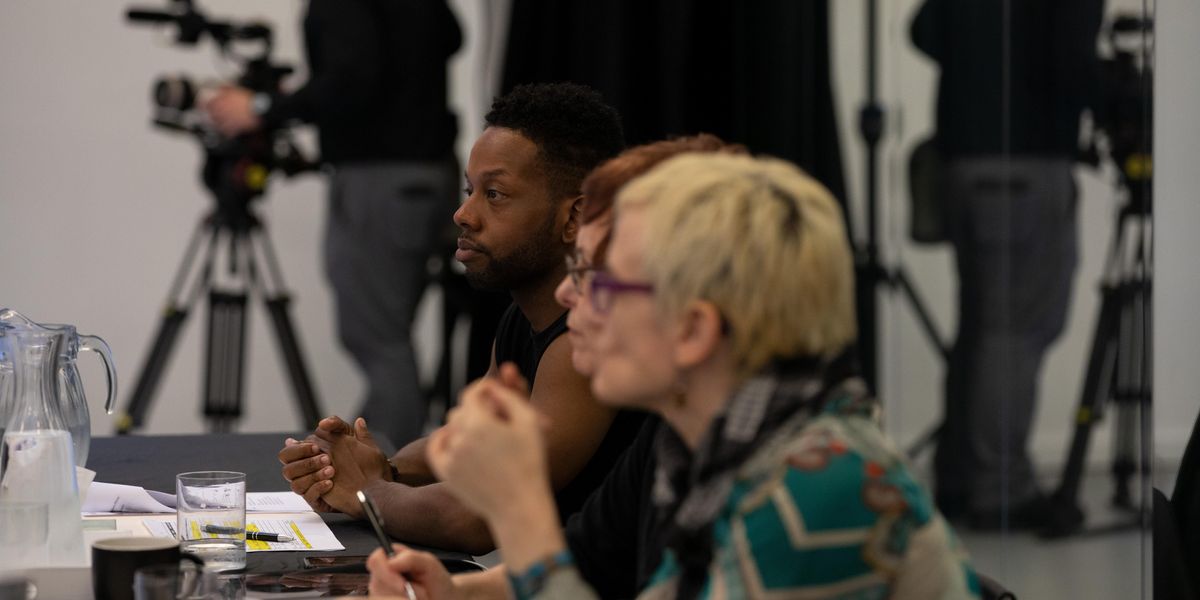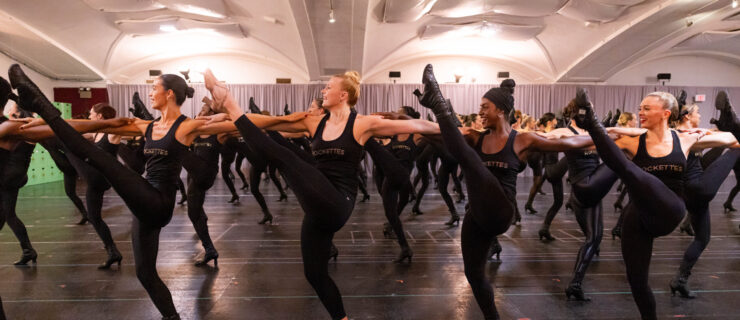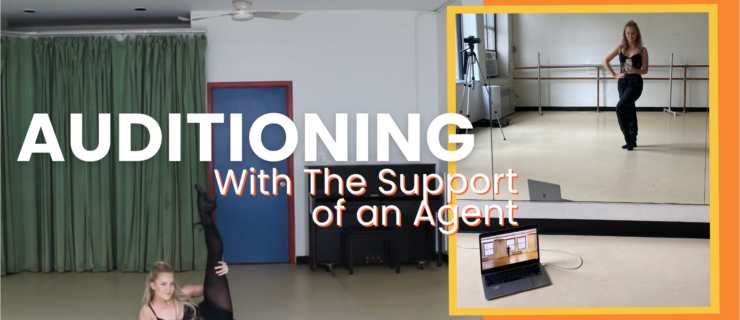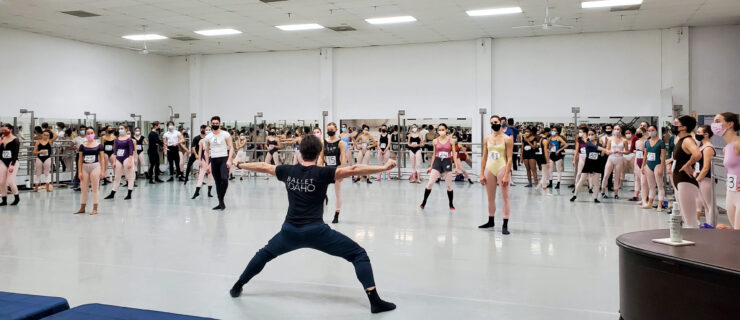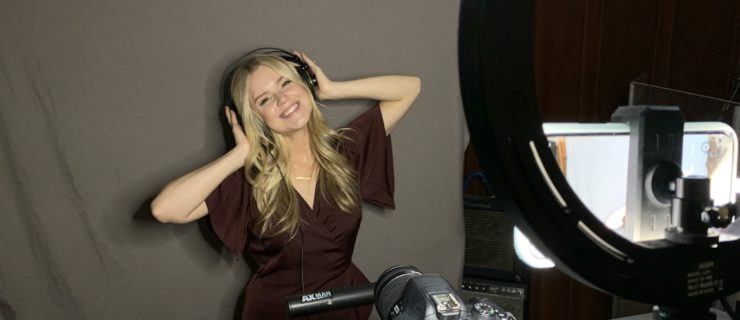How to Deal with Auditions Gone Digital
Just when you thought auditioning couldn’t get any more complicated, COVID-19 has forced many opportunities out of studios and onto screens. Here’s how to show the panel your own unique presence, energy and dynamics—even when “across the floor” might mean “across your garage.”
See and Be Seen
At home, the lack of regular studio cues, like mirrors, can be disorienting. But there’s a silver lining: Since you won’t be sucked into checking yourself out in the mirror, you also have more opportunity to focus on really performing the movement. Daniel Duell, artistic director of Ballet Chicago, says that the direction of your gaze becomes even more important: “Épaulement demands that we continue to imagine an audience and show them where to look. Don’t concentrate on your own image on the screen, and really be aware of where you’re focusing your eyes.”
Sustaining warm, friendly eye contact whenever appropriate also clues choreographers in to your personality. “I always want to get a sense of who they are as people, separate from who they are as a dancer,” says A.I.M artistic director Kyle Abraham. “I want to make sure whoever’s coming in is a really good human being.”
You already know from pre-pandemic auditioning that even when you’re not dancing, you need to show that you’re still present and focused. But that’s easy to forget in the virtual realm, says Gibney Company director Nigel Campbell: “Because you’re technically by yourself, it’s easy to feel that you aren’t being seen.” Imagine that the director has your video pinned throughout the entire audition, and carry yourself accordingly. (This isn’t just your imagination at work: During the barre portion of a virtual audition class, Duell says, “we do use Zoom’s Pin and Spotlight features so we’re able to get a full-screen picture of individual dancers.”)

Lynn Tatum, Courtesy A.I.M
Performing for an Empty House
Choreographers want to see your stage presence inaction. Your job, then, is to literally pretend that you’re onstage. “As we’d do in the studio, we ask dancers to envision communicating to a person,” says Duell.”You’re still reaching human beings ‘out there.’ ”
To best prepare for a virtual audition in the space you have, Jackie Kopcsak, founding faculty member at the USC Glorya Kaufman School of Dance, suggests doing a full run-through of your virtual audition for a fellow dancer over Zoom. If you live with someone, a one-person audience could even silently observe your actual audition, so that you can more easily tap into that feeling of performing for others.
Tackling Choreography or Improvisation
Some auditions may require you to learn phrase work and then record yourself performing it. Take some time to figure out what the phrase’s primary focus might be. Musicality and syncopation? Gestural, character-driven movement? A confident presence, what Abraham calls “being grown”?
While in a normal audition you’d get real-time information about choreographic nuances and may have the opportunity to ask clarifying questions, the onus is now on you to infer what those subtle distinctions are.” You have to really hone in on what is physically being offered, and then implement that into your body without someone suggesting that this is what you should focus on,” says Campbell. Abraham adds that it’s about more than just reproducing a movement sequence. “What I’m looking for is for the artist to take ownership of the material in their individual way, and to show that they understand how to be in the pocket of its certain musicality,” he says.

Rose Eichenbaum, Courtesy USC Kaufman
If the audition includes improvisation, feel free to consciously embrace and respond to the unconventional setting, says Kopcsak: “Imagine what the camera is seeing, exploit the frame and be almost cinematic in your approach. What we’re looking for this year is creativity, innovation and confidence. Make navigating around your kitchen table or interacting with a prop parts of the dance.”
Finding Dimensionality in 2-D
While your two-dimensional representation on screen can’t fully show the richness and complexity of your dancing in person, dialing up your dynamics can give the panel a more accurate idea of who you are as a performer. “The screen flattens us and we aren’t fed by the energy of people in the room,” says Campbell, “so it becomes even more imperative to compensate by being highly articulate and dynamic in your movement.”
If the choreographer asks for a detail to be accentuated, hit that moment a little harder than you would in the studio. “That’s not necessarily only for bigger movements, but you can also turn the volume up on subtlety and nuance,” says Campbell. As long as your movement is clear rhythmically, the panel will see your connection to the music, even if you’re dealing with Zoom’s inherent audio lag.
Just as with pre-pandemic auditions, ” ‘practice, practice, practice’ is a great idea,” says Kopcsak, “but you never know whether there’ll be a glitch or something will go wrong.” Let go of in-the-moment imperfections or technological mishaps as quickly as possible, and keep dancing as full-out as you can in your limited space.
